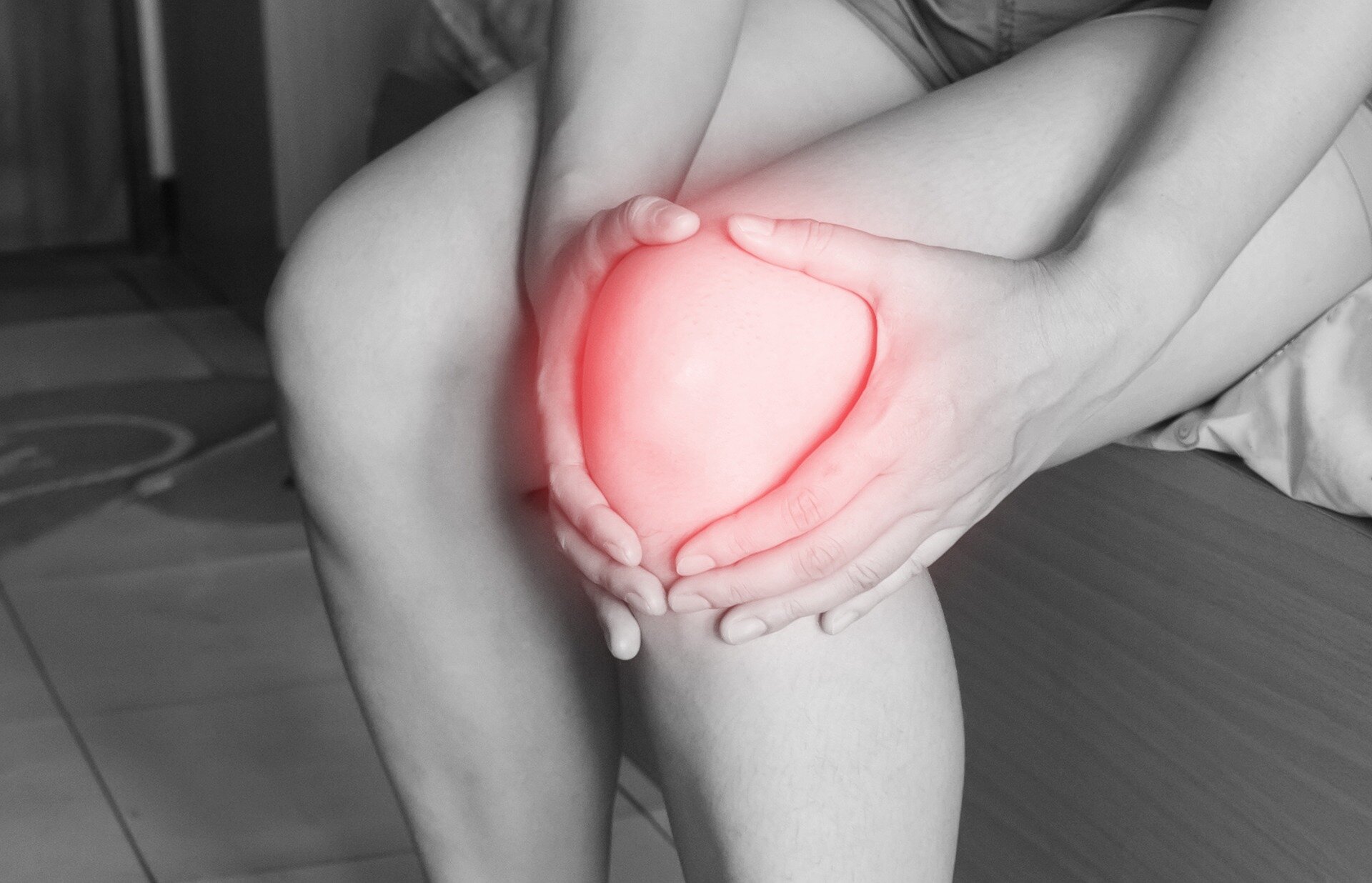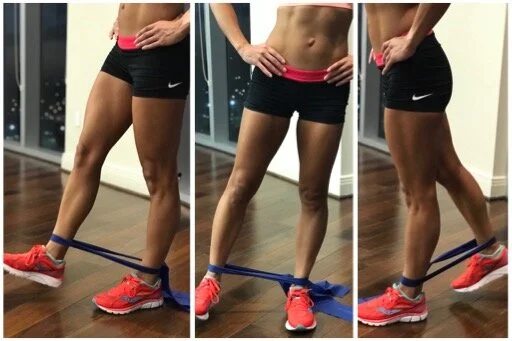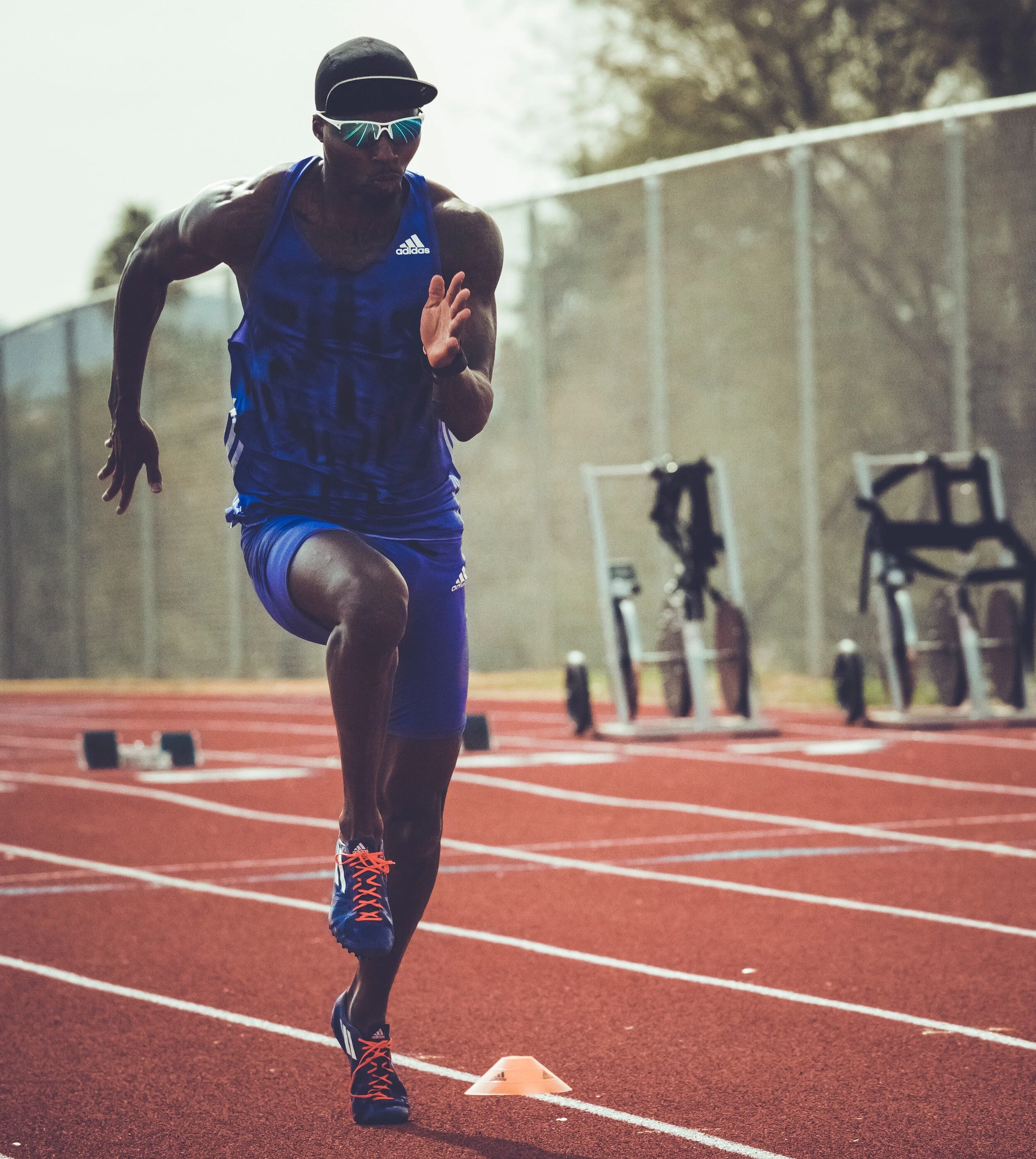IT Band Syndrome (ITBS) is one of the most common injuries in runners, especially in those new to the sport. The Iliotibial Band is a thick tendon that runs from the outside of the outer hip bone all the way down to the outer knee. Repetitive motions, such as in running, can overuse this area and cause inflammation. Specifically during foot strike and the push-off phases of running, the IT Band rubs against the hip or knee bone where it inserts. If the tendon itself or any surrounding tissue is inflamed, then this rubbing causes pain.
The majority of people suffering from ITBS experience pain at the insertion point at the outside of the knee. Most will mistake this for other knee structural issues and solely treat the knee directly, but the problem is actually a result of issues in the hip and outer thigh. Runners will have the greatest success correcting faulty mechanics, strengthening hip and core muscles, and including hip stretching daily. The treatment sounds simple. The only problem is most will get diagnosed with this condition when it’s already been an issue for a long time. This means the treatment, although pretty straight forward, will take longer than you would think. This does not mean you won’t be able to run for months, though! Take a few rest weeks, follow the right protocol, and running won’t necessarily have to take a back seat. If you catch it early enough and start a rehab program and pain management right away, you can actually continue running, although with some modification.
First Things First: Get Rid of Inflammation
If you’ve been experiencing pain for several weeks or longer, chances are you have a load of inflammation in the area. This is the part that will require the most “down time”. Yes, you should refrain from running or doing any other high intensity exercises, but this may only need to be for a few weeks. To make sure you stay in shape, you are free to swap out running with a low impact cross-training activity (as long as it is pain free!). Swimming, cycling, walking, and even the elliptical are great options. Icing every day, especially after activity, will also help decrease inflammation in the area. Some athletes swear by the inclusion of tart cherries (or cherry juice), since it does have anti-inflammatory properties. Speeding up this part of the recovery is a bit tricky, but as long as you take all of the necessary precautions and stay patient, you will be on your way to running in no time!
Be Picky with Strength Training
You may think if you are experiencing knee pain, you should just focus on direct knee exercises, like basic squats or the knee extension machine (which is one of the worst exercises you can ever do!). This is all wrong, as the majority of knee issues are the result of weakness and instability elsewhere in the body (usually the hips). The IT band originates up in the hip so it makes sense to target this area when strength training, even though you may be only getting pain at its insertion point at the knee. It is important to note that the hip does more than just swing your leg forward, to the side, and behind you. It also rotates in place, stabilizes other joints, and is the main weight bearer of the upper body. These are all functions required for running, so it’s obvious you should strengthen each and every motion of the hip.
Runners can highly benefit from resistance band exercises since they are low intensity and effective at isolating muscle groups (on top of being extremely easy and convenient for any time of the day!). Below are moves that target three of the hip motions: help flexion (forward), hip abduction (side), and hip extension (back). A fourth motion, swinging the leg inward (or crossing over the opposite leg), requires the band to be attached to a stable object, rather than looped around the opposite ankle.
Floor exercises are the next best way to strengthen the legs since there is no weight bearing involved. Therefore, even on those days when you are having a hard time controlling pain, you can most likely get through a series of several floor resistance band exercises without a problem. Clamshells work the piriformis muscle, which rotates the hip outward. This is a main stabilizer for runners. Weakness in this muscle, along with the other glute muscles, is what causes hip drop during the stance phase of the running cycle. This motion can impinge on the insertion point of the IT Band. Floor bridges and donkey kicks strengthen the glute and hamstring muscles.
Stretching & Foam Rolling
There has been controversy regarding whether foam rolling the IT Band is a good or bad idea. This all depends on the amount of pain and inflammation present and whether or not the IT band itself is tight. Remember that IT Band Syndrome is usually caused by inflammation at the the insertion or origin points of the tendon, which does not necessarily mean the thigh muscles are tight. The best time to roll the IT Band is after the inflammatory phase when pain is under control. Rolling the glutes, quads, and hamstrings should also be included—and only for a couple of minutes for each muscle group! Too much foam rolling can irritate inflamed areas and make muscles feel bruised. Daily stretching, especially after running and other activities, will keep your muscles from causing restrictions that can lead to injury.
Prevention
As with most other injuries, the key to preventing another episode of pain is to keep your body as strong as possible. You generally want a good balance of strength and flexibility. For runners, it is most important to keep from overtraining—this means gradually increasing mileage, taking “down” weeks every few weeks, practicing a variety of recovery methods, and getting enough sleep. Any odd tightness or soreness that lingers for more than a couple of days is the first sign of an injury or inflammatory response from a workout or even just a simple movement. It is right away that you should take off a day or two of training, ice the area, and focus on strengthening.
One simple rule many runners often skip that can help prevent injuries is a proper warm-up. This includes very easy jogging for 10-20 minutes, followed by dynamic movements such as lunges, squats, leg swings, and form drills. This can take up to 30 extra minutes, but it is an extremely important part of training that will not only help prevent injuries, but also enhance your performance.
Here are IT Band Syndrome recovery steps broken down:
Depending on the severity of the pain, take 1-4 weeks off from running and high intensity exercises. Switch to a low impact activity to keep up fitness levels.
Ice the area of pain daily for 10-20 minutes, 1-5x a day. Here are the ice packs I use. Begin incorporating low impact strengthening exercises for surrounding muscles (shown above and a more extensive workout here)
Once pain is under control, begin running again at 25% of where you left off, every other day. Gradually increase the amount and intensity throughout the course of one month.
Once you are back to full running, keep up the strength training exercises at least twice per week, warm up before every run, stretch daily after exercising, and pay close attention to any symptoms of overtraining.





